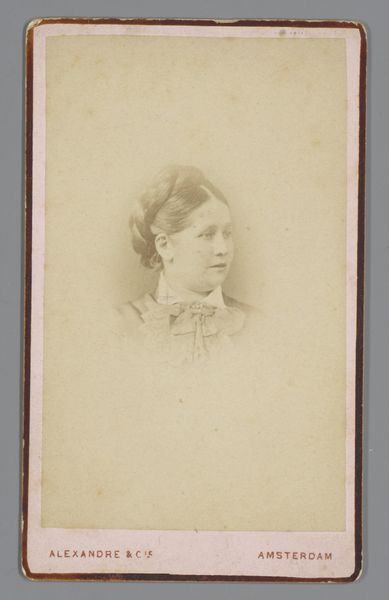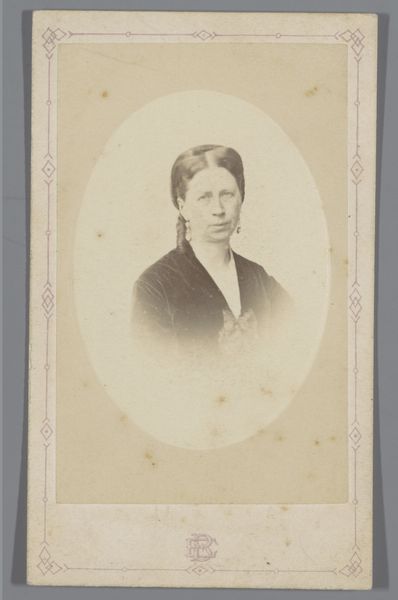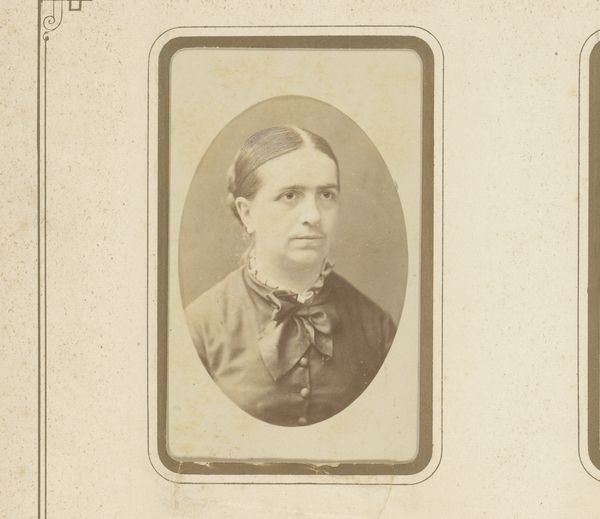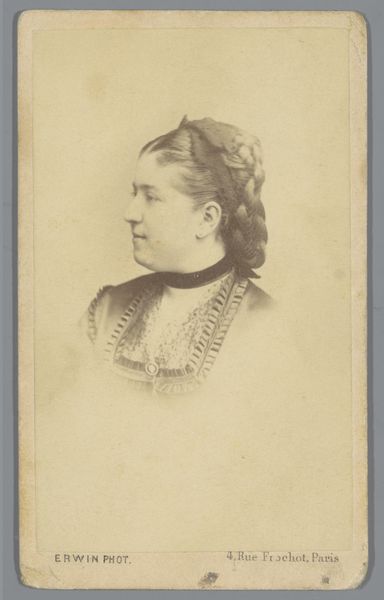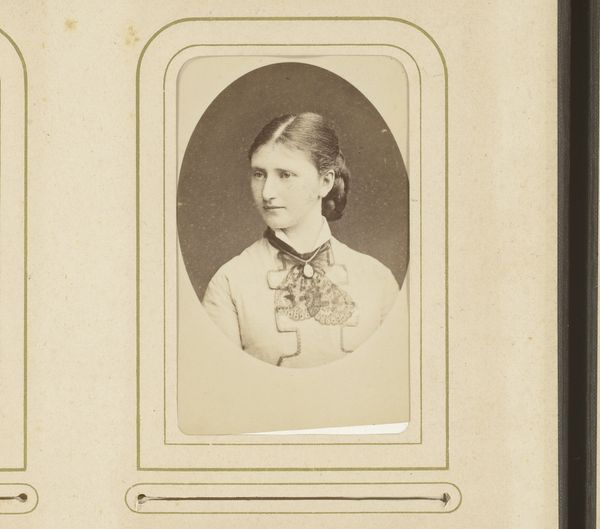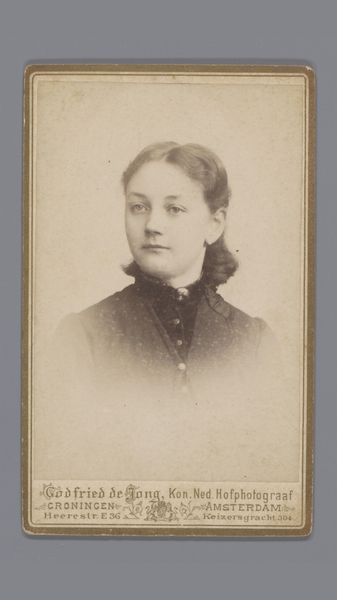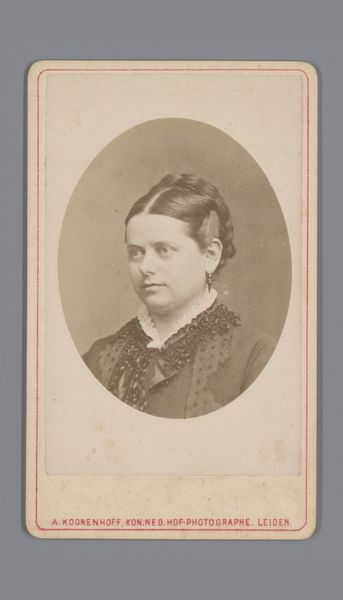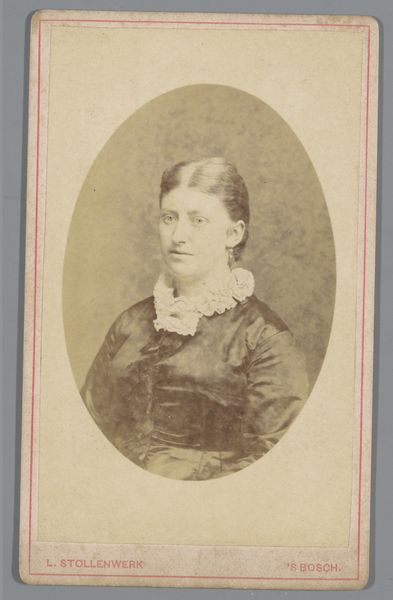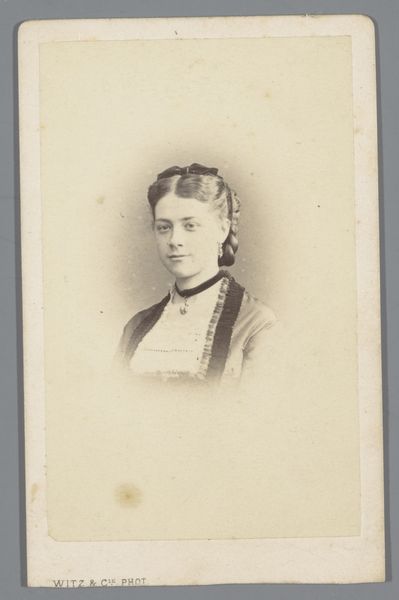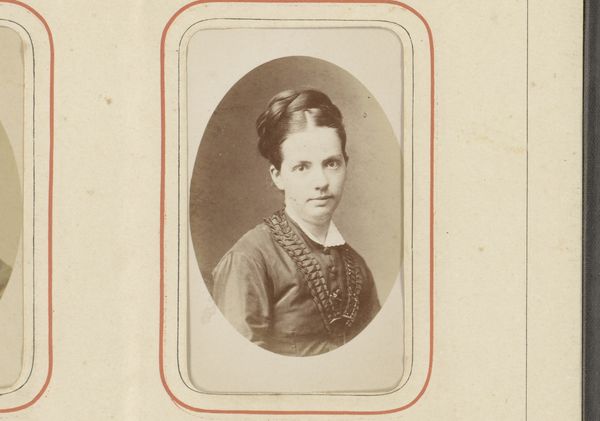
photography, gelatin-silver-print
#
portrait
#
historical design
#
aged paper
#
toned paper
#
light coloured
#
retro 'vintage design
#
photography
#
gelatin-silver-print
Dimensions: height 106 mm, width 65 mm
Copyright: Rijks Museum: Open Domain
Curator: What strikes you first about this faded photograph, Editor? Editor: A certain melancholic stillness. The light-coloured paper almost mutes the image, giving her a timeless, almost ghostly presence. What can you tell me about the portrait itself? Curator: This gelatin-silver print, simply titled "Portret van een onbekende vrouw," which translates to “Portrait of an Unknown Woman,” was created sometime between 1872 and 1874 by Hermann Witte. Notice the design along the frame, quite evocative of a vintage, retro aesthetic. Editor: Hermann Witte was working in an era of significant change in photography. This period marks a transition in how society and individuals chose to visually document their lives. I imagine photographic portraits would have been expensive and rare to have, giving a significance to this portrait of a 'commoner' by the Baden-Baden artist. Do we know anything about Hermann Witte and why he made it? Curator: Witte's studio would have catered to Baden-Baden's elite, with his photography deeply rooted in portraying the evolving socio-political landscape of the region through its upper class. Yet, in many ways, such formal photographs also followed well-established artistic conventions. We still can feel how the composition guides the viewer to the gaze of this mysterious woman. Editor: Precisely. Look at her jewelry, dress, and hair—all speak to societal position, and even the subdued tones carry an emotional and symbolic load, reflecting modesty and respectability. Yet there is something ambiguous that doesn't offer much about her life at all, that begs more questions about it! Curator: It’s also interesting how even an 'unknown' figure embodies the visual codes of femininity from the 19th century, her appearance and pose, shaped by external societal expectations, yet containing enough subtle nuances to allow for subjective interpretations. It encourages you to think how our contemporary values impact readings of photographs. Editor: Indeed, and the print itself becomes an evocative artifact. Thank you, I see a ghost, but she invites conversation and more reflection on that period of transformation of visual language and society.
Comments
No comments
Be the first to comment and join the conversation on the ultimate creative platform.
